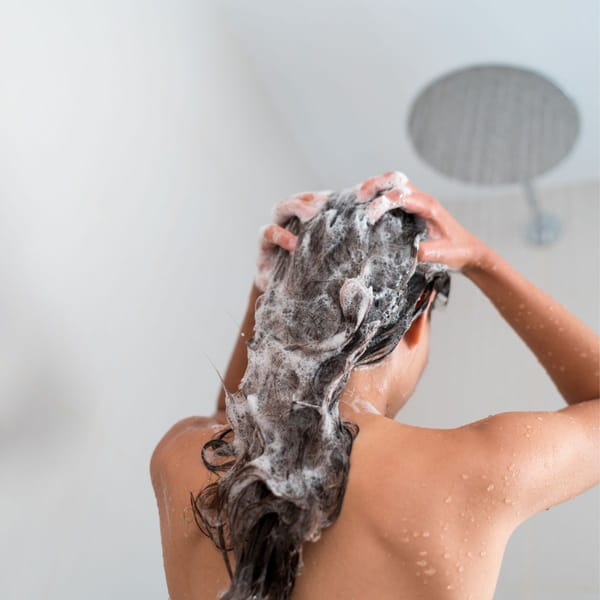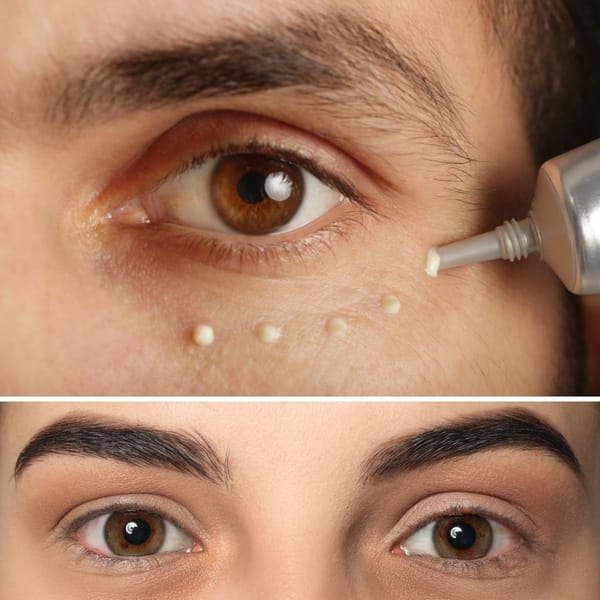Key Takeaways:
- Eye creams can help reduce the appearance of dark circles, but results vary based on ingredients and individual skin types.
- Ingredients like hyaluronic acid, vitamin C, and green tea extract are effective in addressing dark circles and other under-eye concerns.
- Consistent use and proper application of eye creams are crucial for achieving noticeable improvements.
Introduction
Dark circles under the eyes are a common concern for many people. Whether caused by genetics, lack of sleep, or other factors, these pesky shadows can make you look tired and older than you feel. But do eye creams actually work for dark circles? Let's dive into the science, ingredients, and expert opinions to find out.
Understanding Dark Circles
Dark circles can be caused by various factors, including genetics, aging, and lifestyle choices. The skin under the eyes is delicate and thin, making it more susceptible to showing signs of fatigue and aging. Blood vessels under the skin can become more visible, leading to the appearance of dark circles.
Genetics
Genetics play a significant role in the development of dark circles. If your parents or grandparents had dark circles, you are more likely to have them too. This is because the skin structure and pigmentation are inherited traits.
Aging and Dark Circles
As we age, our skin loses collagen and becomes thinner. This makes the blood vessels under the eyes more noticeable, contributing to the appearance of dark circles. Additionally, the fat pads under the eyes can shift, creating hollows that cast shadows.
Lifestyle Factors
Lack of sleep, poor diet, and stress can exacerbate dark circles. When you're tired, your skin can become dull and pale, making dark circles more prominent. Dehydration and excessive alcohol consumption can also contribute to this issue.
The Science Behind Eye Creams
Eye creams are formulated differently from regular facial moisturizers. They contain specific ingredients designed to address the unique concerns of the under-eye area, such as dark circles, puffiness, and fine lines.
Key Ingredients in Eye Creams
Hyaluronic Acid
Hyaluronic acid is a powerful hydrating ingredient that can help plump the skin and reduce the appearance of fine lines. It attracts and retains moisture, making the skin look more youthful and refreshed.
Vitamin C
Vitamin C is a potent antioxidant that can brighten the skin and reduce the appearance of dark circles. It helps to neutralize free radicals and stimulate collagen production, improving the overall texture and tone of the skin.
Green Tea Extract
Green tea extract is known for its anti-inflammatory and antioxidant properties. It can help reduce puffiness and soothe the delicate skin around the eyes, making it a popular ingredient in eye creams.
How to Apply Eye Cream
Proper application of eye cream is crucial for achieving the best results. Use your ring finger to gently pat a pea-sized amount of product around the eye area. Avoid rubbing or pulling the skin, as this can cause irritation and damage.
Consistency is Key
For eye creams to be effective, they must be used consistently. Apply the product twice daily, in the morning and evening, as part of your skincare routine. It may take several weeks to see noticeable improvements, so patience is essential.
Expert Opinions
Board-Certified Dermatologists
Board-certified dermatologists agree that eye creams can be beneficial for reducing the appearance of dark circles. However, they emphasize the importance of choosing products with proven ingredients and using them consistently.
Ophthalmologist-Tested Formulas
Ophthalmologist-tested eye creams are formulated to be safe for use around the eyes. These products are less likely to cause irritation and are suitable for sensitive skin.
Case Studies
Case Study 1: Sarah's Journey
Sarah, a 35-year-old beauty writer, struggled with dark circles for years. After incorporating an eye cream with hyaluronic acid and vitamin C into her skincare routine, she noticed a significant improvement in the appearance of her under-eye area within four weeks.
Case Study 2: Mark's Experience
Mark, a 42-year-old marketing executive, had persistent dark circles due to stress and lack of sleep. He started using an eye cream with green tea extract and saw a reduction in puffiness and dark shadows after consistent use for two months.
Common Myths About Eye Creams
Myth 1: Eye Creams Are Just Expensive Moisturizers
While some people believe that eye creams are no different from regular moisturizers, they are actually formulated with specific ingredients to address under-eye concerns. These products are designed to be gentle on the delicate skin around the eyes.
Myth 2: Eye Creams Work Instantly
Eye creams do not provide instant results. It takes time for the ingredients to work and for the skin to show improvements. Consistent use is essential for achieving the desired outcome.
Choosing the Right Eye Cream
Skin Type Considerations
When selecting an eye cream, consider your skin type. If you have dry skin, look for products with hydrating ingredients like hyaluronic acid. For sensitive skin, choose ophthalmologist-tested formulas to minimize the risk of irritation.
Targeted Concerns
Identify your primary concerns, such as dark circles, puffiness, or fine lines, and choose an eye cream with ingredients that address those issues. For example, vitamin C is excellent for brightening, while green tea extract can reduce puffiness.
Application Tips
Use a Pea-Sized Amount
A little goes a long way with eye creams. Use a pea-sized amount for both eyes to avoid overloading the delicate skin and causing irritation.
Gently Pat, Don't Rub
Use your ring finger to gently pat the eye cream around the eye area. Avoid rubbing or pulling the skin, as this can lead to further damage and irritation.
Other Factors to Consider When Dealing With Dark Circles
The Importance of Hydration
Hydration is crucial for maintaining healthy skin and reducing the appearance of dark circles. Drink plenty of water throughout the day and use a hydrating eye cream to keep the skin plump and youthful.
The Role of Diet
A balanced diet rich in vitamins and minerals can improve the overall health of your skin. Foods high in antioxidants, such as fruits and vegetables, can help reduce inflammation and promote a brighter complexion.
Sleep and Dark Circles
Getting enough sleep is essential for reducing dark circles. Aim for 7-9 hours of quality sleep each night to allow your skin to repair and regenerate.
Stress Management
Chronic stress can take a toll on your skin, leading to dark circles and other issues. Practice stress management techniques, such as meditation, yoga, or deep breathing exercises, to improve your overall well-being.
Sun Protection
Protecting your skin from the sun is crucial for preventing dark circles and other signs of aging. Use a broad-spectrum sunscreen with at least SPF 30 daily, even on cloudy days.
The Importance of a Skincare Routine
A consistent skincare routine is essential for maintaining healthy skin and reducing the appearance of dark circles. Cleanse, tone, and moisturize daily, and incorporate an eye cream to address specific concerns.
The Role of Exfoliation
Exfoliating the skin can help remove dead skin cells and promote a brighter complexion. Use a gentle exfoliant once or twice a week to improve the overall texture and tone of your skin.
The Benefits of Facial Massage
Facial massage can improve blood circulation and reduce puffiness. Use your ring finger to gently massage the under-eye area in circular motions to promote lymphatic drainage and reduce dark circles.
The Impact of Allergies
Allergies can cause inflammation and swelling, leading to dark circles. If you suspect that allergies are contributing to your dark circles, consult with a healthcare professional for appropriate treatment.
The Role of Hormones
Hormonal changes, such as those that occur during pregnancy or menopause, can affect the skin and contribute to dark circles. Maintaining a consistent skincare routine and using targeted eye creams can help manage these changes.
The Benefits of Cold Compresses
Applying a cold compress to the under-eye area can help reduce puffiness and constrict blood vessels, making dark circles less noticeable. Use a chilled spoon or a cold gel eye mask for a quick and easy solution.
The Impact of Pollution
Environmental pollutants can damage the skin and contribute to dark circles. Using eye creams with antioxidants can help protect the skin from free radical damage and improve its overall health.
The Impact of Smoking
Smoking can damage the skin and accelerate aging, leading to dark circles and other issues. Quitting smoking can improve your overall health and the appearance of your skin.
The Role of Alcohol
Excessive alcohol consumption can dehydrate the skin and exacerbate dark circles. Limiting alcohol intake and staying hydrated can help improve the appearance of the under-eye area.
The Role of Caffeine
Caffeine is a popular ingredient in eye creams due to its ability to constrict blood vessels and reduce puffiness. Eye creams with caffeine can help improve the appearance of dark circles and make the skin look more awake.
The Role of Sleep Position
Sleeping on your back with your head elevated can help reduce fluid retention and prevent puffiness. Consider using an extra pillow to keep your head elevated and minimize the appearance of dark circles.
Makeup Tips for Dark Circles
Color Correcting
Use a peach or orange color corrector to neutralize the blue or purple tones of dark circles. Apply a small amount before your concealer for a more even complexion.
Concealer Application
Choose a creamy concealer that matches your skin tone and apply it in a triangular shape under the eyes. Blend it out with a damp makeup sponge for a natural finish.
The Role of Collagen
Collagen is a protein that provides structure and elasticity to the skin. As we age, collagen production decreases, leading to thinner skin and more visible dark circles. Eye creams with ingredients that stimulate collagen production can help improve the appearance of the under-eye area.
The Impact of Free Radicals
Free radicals are unstable molecules that can damage skin cells and accelerate aging. Antioxidants, such as vitamin C and green tea extract, can neutralize free radicals and protect the skin from damage.
The Benefits of Peptides
Peptides are short chains of amino acids that can stimulate collagen production and improve skin elasticity. Eye creams with peptides can help reduce the appearance of fine lines and dark circles.
The Role of Retinol
Retinol is a form of vitamin A that can promote cell turnover and improve skin texture. Eye creams with retinol can help reduce the appearance of dark circles and fine lines, but they should be used with caution, as they can cause irritation.
The Importance of Patch Testing
Before using a new eye cream, it's essential to patch test the product to ensure it doesn't cause irritation. Apply a small amount to the inside of your wrist and wait 24 hours to check for any adverse reactions.
The Role of Niacinamide
Niacinamide, also known as vitamin B3, is a versatile ingredient that can improve skin texture, reduce inflammation, and brighten the complexion. Eye creams with niacinamide can help address multiple under-eye concerns.
The Benefits of Ceramides
Ceramides are lipids that help maintain the skin's barrier and retain moisture. Eye creams with ceramides can help strengthen the delicate skin around the eyes and reduce the appearance of dark circles.
The Role of Growth Factors
Growth factors are proteins that can stimulate cell growth and repair. Eye creams with growth factors can help improve the overall health and appearance of the under-eye area.
The Benefits of Aloe Vera
Aloe vera is known for its soothing and hydrating properties. Eye creams with aloe vera can help calm the skin and reduce inflammation, making dark circles less noticeable.
The Role of Licorice Extract
Licorice extract is a natural ingredient that can brighten the skin and reduce pigmentation. Eye creams with licorice extract can help fade dark circles and improve the overall tone of the under-eye area.
The Importance of Consistency
Consistency is key when it comes to using eye creams. Apply the product twice daily, in the morning and evening, as part of your skincare routine. It may take several weeks to see noticeable improvements, so patience is essential.
The Benefits of Rosehip Oil
Rosehip oil is rich in vitamins and antioxidants that can nourish the skin and improve its appearance. Eye creams with rosehip oil can help reduce the appearance of dark circles and promote a more youthful complexion.
The Role of Shea Butter
Shea butter is a deeply moisturizing ingredient that can help nourish and protect the delicate skin around the eyes. Eye creams with shea butter can provide long-lasting hydration and improve the overall texture of the under-eye area.
The Role of Vitamin E
Vitamin E is a powerful antioxidant that can help protect the skin from damage and improve its appearance. Eye creams with vitamin E can help reduce the appearance of dark circles and promote a more youthful complexion.
The Benefits of Jojoba Oil
Jojoba oil is a lightweight, non-comedogenic oil that can provide hydration without clogging pores. Eye creams with jojoba oil can help nourish the delicate skin around the eyes and reduce the appearance of dark circles.
The Role of Squalane
Squalane is a hydrating ingredient that can help maintain the skin's moisture barrier. Eye creams with squalane can provide long-lasting hydration and improve the overall texture of the under-eye area.
The Importance of a Holistic Approach
Addressing dark circles requires a holistic approach that includes a consistent skincare routine, a balanced diet, adequate sleep, and stress management. Combining these factors with the right eye cream can help achieve the best results.
Summary
Eye creams can be effective in reducing the appearance of dark circles, but results vary based on individual skin types and the ingredients used. Consistent use and proper application are crucial for achieving noticeable improvements. Ingredients like hyaluronic acid, vitamin C, and green tea extract are particularly beneficial for addressing under-eye concerns. A holistic approach that includes a balanced diet, adequate sleep, and stress management can further enhance the effectiveness of eye creams.
FAQ
Q1: How long does it take to see results from using an eye cream for dark circles?
A1: It typically takes several weeks of consistent use to see noticeable improvements. Patience and regular application are key to achieving the best results.
Q2: Can I use my regular moisturizer as an eye cream?
A2: While regular moisturizers can provide some hydration, eye creams are specifically formulated to address the unique concerns of the under-eye area. It's best to use a product designed for this delicate skin.
Q3: Are there any side effects of using eye creams?
A3: Some people may experience irritation or allergic reactions to certain ingredients. It's important to patch test new products and choose ophthalmologist-tested formulas, especially if you have sensitive skin.







